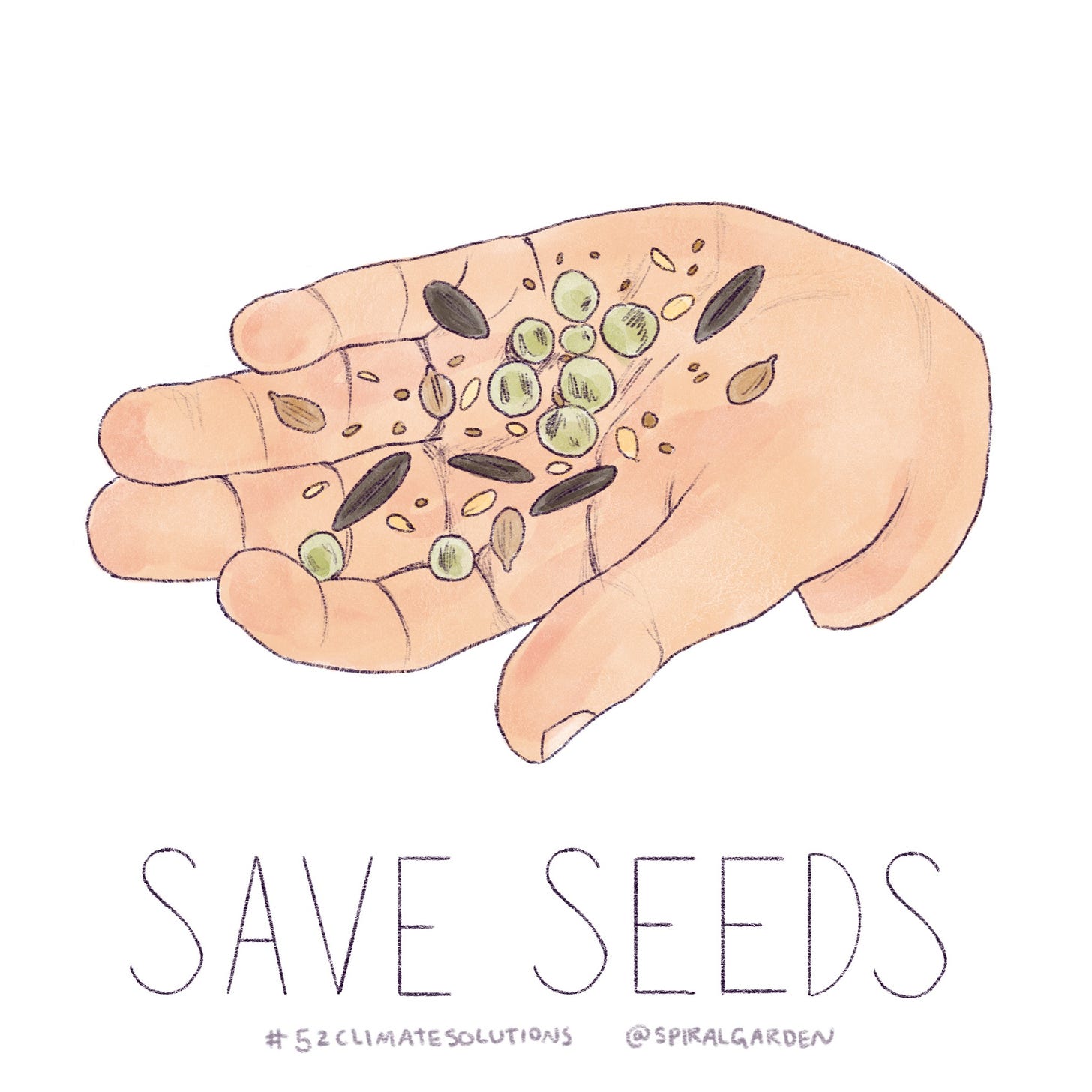3. Save Seeds
Our third in the 52 Climate Solutions series, and an important one for local food sovereignty and security, biodiversity and a healthier planet.
Industrialised agriculture and multinational corporations’ control most of the global seed supply. This is bad for biodiversity and reduces the range of foods we eat. Ninety percent of the crop varieties grown 100 years ago are already gone. Many growers are limited to the few varieties of seed they can buy, rather than the old-school ways of selecting and passing-on the diverse assortment of plant varieties that used to exist. Many of those lost varieties may have been the ones needed under changing climate and rainfall conditions.
For this weeks’ #52climatesolutions, we suggest you save seeds. Seed saving is an ancient activity, as early humans saved and shared seeds, selecting the best wild plants to feed themselves and passing those varieties along to others. By saving seeds from the best examples of the veggies you grow, you are more likely to grow plants that suit your local conditions. If you have neighbours who have grown food for a long time, you might ask for some of their seed – you’ll be more likely to grow food successfully if using seed that is suited to local conditions and it will be less dependent on fertilisers or herbicides.
Saving seed is an easy and free climate solution. By raising seed to grow productive food plants, you are doing multiple things to reduce greenhouse gas emissions, notably avoiding the need for refrigeration and emissions relating to industrially grown and sold food and plants. When you save seeds, you are taking back control of your food supply, and improving your own, and your communities’, resilience. As Vandana Shiva said “When you control seed you control food.” And you can bet, the food you grow will taste better than supermarket food.
If you have food plants growing in your garden, let them flower (providing forage for pollinators), and go to seed. Autumn is an especially great time to do this. If you buy seeds or seedlings, look for heirloom varieties that are not bred to be sterile, otherwise you won't be able raise seeds for your next crop. When buying fruits and veggies, support local growers who use heirloom varieties. Save and label your seeds, then keep them dry or share them with neighbours. You might even consider staring a community seed library.
Read on for tips on saving, storing and sharing seeds, as well as resources for learning more and making your own seed packets. You’ll also find this week’d printable colouring page, just for fun or for your climate solutions journal. You can also purchase an art print or tea towel featuring the first 52 climate solutions, here. Let us know how you go by tagging us @spiralgarden on social media, or commenting below.
Keep reading with a 7-day free trial
Subscribe to The Spiral Garden to keep reading this post and get 7 days of free access to the full post archives.


